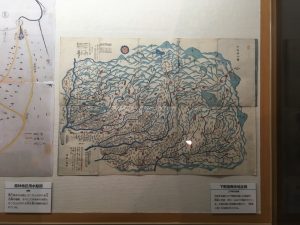After going to the see the Nasau Canal today, I found myself thinking a lot about the contrasting examples we have looked at so far involving environmental engineering to alter the land in a specific area. The Nasau Canal was made by pure human-power, and was done so in just five months. This is absolutely ridiculous, especially considering that it is over 16 kilometers long. I can’t really wrap my head around that, but Yukiko explained it well by saying that this project shows how much the farmers in the area rely on water, and how much they needed it to survive. Earlier in the course, we read about the Echogi Plain in “Constructing Nature”, where the river system was altered by people of the area in an effort to better control flooding. The rivers were completely re-routed but eventually had a reverse effect and while the re-construction did help with controlling floods, different problems arose as a result. The new river system made water drainage difficult to control and allowed flowing water to move at high velocity which put the area at risk of creating more damage. The re-construction of the river system in the Echogi Plain created problems that the people living there would not have had to dealt with if the rivers were not re-routed.
In the Nasau Canal, from my understanding, everything worked out pretty much as perfectly as it could have. Water began to flow and is still flowing today, a couple thousand years later. To me, it is remarkable to think that when dealing with a canal system over 16 kilometers in length, there are so many factors that could have made the project completely fall through. Especially without the technology and resources that we have available to us today, it is so difficult to understand how an environmental engineering project like the Nasau Canal could go so successfully. This new system completely changed the area forever, but changed it for the better, something that cannot be said about the Echogi Plain.
In terms of learning from these projects, I think the unsuccessful Echogi Plain teaches a much more valuable lesson: that when you challenge nature, you will usually lose the battle. This is a belief that I think many of us in this class both share and understand. With that in mind, looking at the Nasau Canal, it is clear that the natural environment can infact be altered in a way that brings benefits to both the people and the land. I hope that we can continue to discuss the effects that can arise from environmental-altering human actions. Until today, I would almost always say that major environmental engineering projects like that done for the Nasau Canal are going to create more negative impacts than positive ones. I have learned a great deal from today’s experience alone and I am left with many thoughts that have completely re-shaped my understanding of the importance of water in Japan’s agricultural system and in the rest of the world.

This is a map of the canal that was in the museum we visited. Not only is this an amazingly designed map, but it also shows the scale the canal, and how much land it covers.
Recent Comments